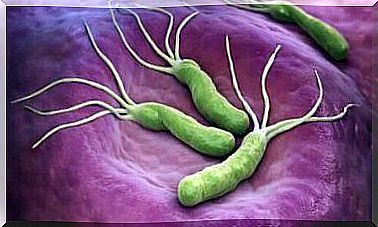Rifampicin: Dosage And Indications
Rifampicin owes its antibiotic effect to its ability to inhibit RNA synthesis in bacterial cells. It does this by inhibiting the action of RNA polymerase, a DNA dependent enzyme. To find out more, read this article!

Rifampicin is an antibiotic that represents the rifampicin family. It is a semi-synthetic compound used as the first choice in the treatment of tuberculosis.
However, it should not be used as monotherapy, as this would promote the development of bacterial resistance. For this reason, it is given with other medicines which we will present to you later.
Rifampicin also has other indications, such as the treatment of patients who do not have symptoms of the bacteria Neisseria meningitidis , the prophylactic treatment of Haemophilus influenzae type B and the treatment of leprosy, among other indications.
The history of rifampicin

This antibiotic first appeared on the market in the 1960s. First, we obtained a metabolite of rifampicin, rifampicin B. On this molecule, the researchers tried to carry out a series of structural modifications in order to increase the potency of the antibiotic along with its rapid elimination through bile was reduced. Finally, we were able to synthesize rifampicin.
After its introduction to the market, it was considered a first-line treatment for tuberculosis. However, there was resistance of pathogens to rifampicin. It was therefore necessary to administer other drugs at the same time as rifampicin, such as isonizaide and ethambutol.
However, the discovery of rifampicin was undoubtedly a breakthrough in medicine. Find out more about this drug in this article.
What is tuberculosis?
Tuberculosis is a disease caused by infection with a bacteria called Mycobacterium tuberculosis . This microorganism in most cases affects the lungs. It is spread through the air, for example, when a person sneezes or coughs. It is enough for another person to breathe in the expelled particles for the infection to occur.
However, it is a preventable disease which luckily has a cure today. In particular, more than 49 million patients have been cured since 2000 thanks to the diagnosis and treatment available to us today.
On the other hand, the signs and symptoms of this disease depend on the area where the bacteria multiply. Normally, as we have said, it usually affects the lungs and exhibits the following symptoms :
- Intense and persistent cough
- Chest pain
- Cough with blood or thick phlegm
- Fever and chills
- Weightloss
- Decreased feeling of hunger
How does rifampicin affect the body?
Rifampicin owes its antibiotic effect to its ability to inhibit RNA synthesis in bacterial cells. It does this by inhibiting the action of RNA polymerase, a DNA-dependent enzyme. Rifampicin does not bind to polymerases in eukaryotic cells, such as those in humans, so human RNA synthesis is not affected.
On the other hand, it is a bacteriostatic or bactericidal drug, depending on the dose at which it is administered. At lower doses it will be bacteriostatic, i.e. it will prevent the development of bacterial cells, and at higher doses it will have a bactericidal action or, in other words, it will cause the death of the bacteria.
At what dose is rifampicin given?
The dose will vary depending on the patient to be treated. As for the doses recommended in adult patients not infected with HIV, they are administered orally and intravenously, with a maximum permissible dose of 600 mg per day. If the patient has HIV, the dose will be 10 mg / kg body weight, by mouth and intravenously.
In children, the dose for HIV-negative children is reduced to 10-20 mg / kg per day, the maximum dose being 600 mg, always in combination with another anti-tuberculosis drug. If the child has the human immunodeficiency virus, the dose will be the same.
It is given once a day for two months at the same time as another anti-tuberculosis drug. Then isoniazid and rifampicin will be given at the same dose once a day or two or three times a week for the next four months.
Conclusion
Rifampicin is an antibiotic indicated for the first line of treatment of tuberculosis, in combination with other agents. The combination has become necessary due to the resistance developed by the bacteria.
You can consult your doctor or pharmacist if you have any doubts about this medicine. You should always follow the instructions that the professionals give you. The abuse of drugs can lead to serious health problems.









